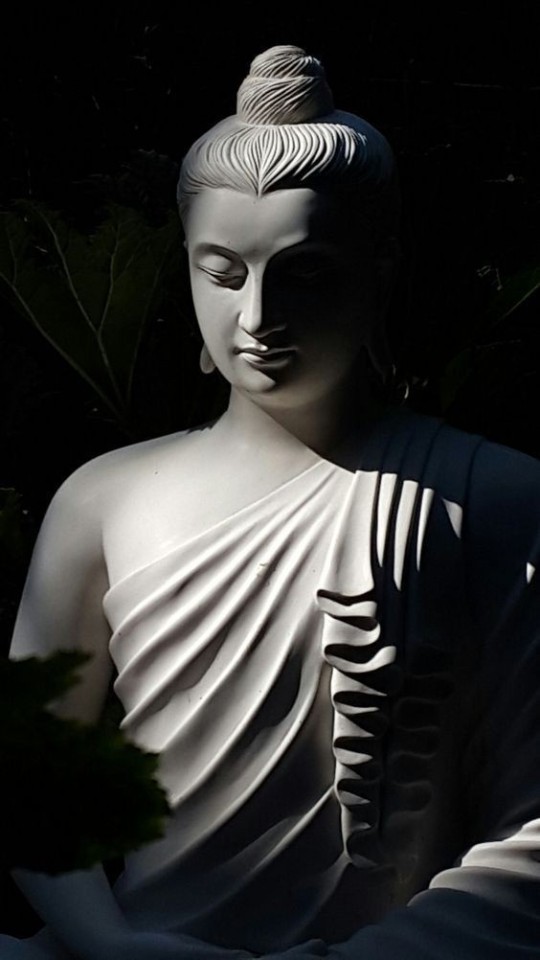#gautama buddha
Quote
Happiness never decreases by being shared.
Gautama Buddha
#Gautama Buddha#motivation#quotes#poetry#literature#relationship quotes#writing#original#words#love#relationship#thoughts#lit#prose#spilled ink#inspiring quotes#life quotes#quoteoftheday#love quotes#poem#aesthetic
291 notes
·
View notes
Text

"Let me make a wager with you."
"[...] He'd be an immortal, a Buddha, if he's good;
Wickedness would cloak him with hair and horn.
Endlessly changing he runs amok in Heaven,
Not to be seized by fighting lords or thunder gods."
the mental image of Sun Wukong absolutely twisted into a horrifying demonic form by his rage and ambition, moments before that fateful bet, make me go batshit insane <3
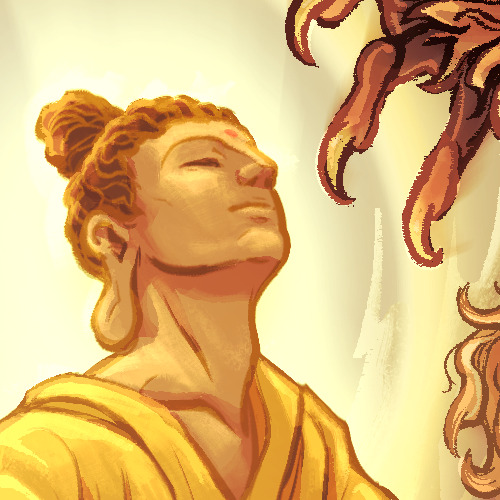

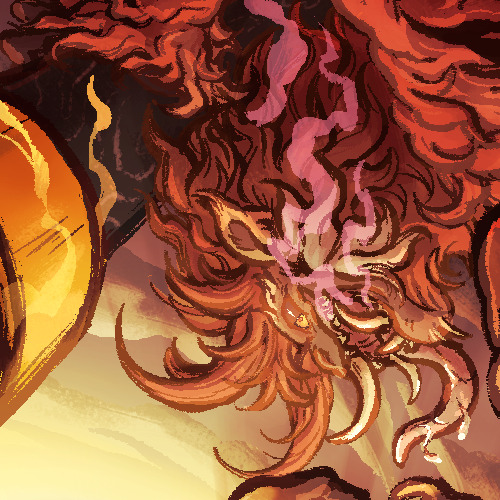

#jttw#journey to the west#xiyouji#jttw fanart#sun wukong#monkey king#tathagata#gautama buddha#bell dragon art
702 notes
·
View notes
Quote
Happiness never decreases by being shared.
Gautama Buddha
#Gautama Buddha#motivation#quotes#poetry#literature#relationship quotes#writing#original#words#love#relationship#thoughts#lit#prose#spilled ink#inspiring quotes#life quotes#quoteoftheday#love quotes#poem#aesthetic
144 notes
·
View notes
Quote
Happiness never decreases by being shared.
Gautama Buddha
357 notes
·
View notes
Text

The seated Buddha. Stucco sculpture from a stupa at the now-destroyed site of Hadda, Afghanistan, once part of the region of Gandhara. Artist unknown; ca. 300 CE (late Kushan period). Now in the Cleveland Museum of Art.
#art#art history#Buddha#Gautama Buddha#Buddhism#Buddhist art#Gandhara#South Asia#South Asian art#ancient art#Kushan period#sculpture#stucco#Cleveland Museum of Art
406 notes
·
View notes
Quote
Happiness never decreases by being shared.
Gautama Buddha
#Gautama Buddha#motivation#quotes#poetry#literature#relationship quotes#writing#original#words#love#relationship#thoughts#lit#prose#spilled ink#inspiring quotes#life quotes#quoteoftheday#love quotes#poem#aesthetic
74 notes
·
View notes
Quote
Happiness never decreases by being shared.
Gautama Buddha
#Gautama Buddha#motivation#quotes#poetry#literature#relationship quotes#writing#original#words#love#relationship#thoughts#lit#prose#spilled ink#inspiring quotes#life quotes#quoteoftheday#love quotes#poem#aesthetic
336 notes
·
View notes
Text
“Radiate boundless love towards the entire world—above, below, and across—unhindered, without ill will, without enmity.”
— Gautama Buddha
52 notes
·
View notes
Quote
Happiness never decreases by being shared.
Gautama Buddha
#Gautama Buddha#motivation#quotes#poetry#literature#relationship quotes#writing#original#words#love#relationship#thoughts#lit#prose#spilled ink#inspiring quotes#life quotes#quoteoftheday#love quotes#poem#aesthetic
62 notes
·
View notes
Quote
Happiness never decreases by being shared.
Gautama Buddha
#Gautama Buddha#motivation#quotes#poetry#literature#relationship quotes#writing#original#words#love#relationship#thoughts#lit#prose#spilled ink#inspiring quotes#life quotes#quoteoftheday#love quotes#poem#aesthetic
286 notes
·
View notes
Quote
Happiness never decreases by being shared.
Gautama Buddha
#Gautama Buddha#motivation#quotes#poetry#literature#relationship quotes#writing#original#words#love#relationship#thoughts#lit#prose#spilled ink#inspiring quotes#life quotes#quoteoftheday#love quotes#poem#aesthetic
125 notes
·
View notes
Note
Just a question. I want to make a fic about the first Jedi and his disciples before Disney gets the drop on me. I'm only familar with disney canon. What miracles are associated with the buddha and the bodhissatva and what way can I characterize the philosophy of the force in buddhist terms?
The basic idea was that the first Jedi is basically a wandering Gautama Buddha and his disciples were basically the Eight Bodhisattva. Manjushri is known for his kindness and wisdom. Guanyin is kind and compassionate. Vajrapani is strength and protection incarnate. Maitreya is prophesized to bring balance to the force. Ksitigarbha swore to save everyone in the galaxy no matter how evil and no matter what it costs her and I don't really know much about the rest. Might even toss some characters like Sun Wukong and other buddhist associated characters.
The intent is to make the first jedi a real larger than life figure. God's amongst mortals who would make any other force user look like a joke. Yet also make them suprisingly human in that the first jedi just wants to help people and comfort them and doesn't want to use such powers in the first place for violence.
I also want to play around with the first sith and portray them as Eldritch abominations and monsters who feed of the weak and oppressed. Maybe they would be the Mara analogue in this telling.
Oh, this is intriguing! I love this concept!
Buddhism and Miracles
The Buddhist view on miracles, wonders, magic, superhuman powers is a quite complex one. There is a threefold distinction of Buddhism: the Buddhist science of the mind, Buddhist philosophy and Buddhist religion. The miracles of Gautama Buddha are belonging to the realm of Buddhist religion: it is proposed that through mental training one can achieve miraculous powers, as the basis of "miracles" is perfect control over one's own mind, like goldsmiths making the gold pure and workable, so they can use it to create wonderous things. The Buddha was reportedly manifested the ability to walk on water, to read other people's minds, to fly through air, to heal the wounded with his will, or growing a tree full of flowers and jewels out of his toothpick, calming down a raging elephant that attacked the village he visited, and so on. However, such miracles are all subordinate to the one true, genuinely miraculous power that one must strive for: the ability to guide people according to their mental development, for their own good, using suitable methods to fit these people.

It must be noted that in Buddhist mythology, miraculous powers are regarded as potential off-shoots of practice. Through mental training, one can develop the capacity to concentrate the power of the mind. But it's crucial to understand that in Buddhist thought, these abilities aren't dependent on the cultivation of wisdom and compassion: in stories, it's not just possible, but actually quite common for someone to gain such powers without any significant, or even meaningful spiritual and psychological progress. For this reason, the Buddhist view on these miraculous powers - should they exist at all - is that if you have them, that's a sign that you're making progress, but you mustn't brag about or reveal them, unless it's absolutely necessary. And unless you're fully awakened, these supernormal powers have a way of engendering supernormal defilements. The Buddha, like most most spiritual or religious teachers of the East, warned against those individuals who display miracles to attract people to their traditions, because there is a good chance that they're tricksters led by greed, or that their holiness is on shaky grounds.
The wholesome and unwholesome use of miracles
There is a story about the fifteen days of the miracles demonstrated by the Buddha, all performed in response to the relentless claims of six ascetics who claimed, the teachings of the Buddha are invalid, as they possess mystic powers far grater than him. The Buddha outdid every single miracles the ascetics were able to produce. Since such display of special powers was done in order to arouse or strengthen faith - which is, in Buddhism, refers to trust or confidence in the Buddha's path of practice and one's own potential for enlightenment - the performance of the fifteen miracles was a wholesome act. And likewise, there's the story of Khema: she was a young, extraordinarily beautiful queen, who was clinging on physical beauty. When she met the Buddha, he was able to read her mind, and he manifested a time-lapse of a young and even more beautiful woman, aging it to middle age, old age, very old age, then to dust. As a result, Khema realized the true, impermanent nature of the object of her attachment. This is another example for the wholesome use of miracles.


In Star Wars, this can be likened to Master Yoda using the Force in Episode V to rise Luke Skywalker's x-wing out of the swamp: this "miracle" was demonstrated to arouse trust and confidence in Jedi teachings and in his apprentice's own potential to become a Jedi. You can see that Jedi Knights are demonstrating their abilities only "for knowledge and defense" as Yoda said.
When it comes to unwholesome uses of miracles, we have the story of Pindola Bharadwaja, who was one of the Buddha's first disciples. It's said that one day, a wealthy merchant, who didn't believe in the existence of the extraordinary powers of holy men, challenged them: he suspended a beautiful and expensive sandalwood alms bowl from the top of a really high bamboo pole, and said, the master who can get it down, can keep it. Pindola Bharadwaja, who progressed very fast in his mental training, and attained several miraculous powers as a result, stepped forward. He rose into the air easily and took the bowl. The people were in awe, but their excitement alerted the Buddha who arrived to the scene. He broke the bowl into pieces and said, he is very displeased by the public display of such miracles, likening it to prostitution that is done for the sake of cheap delights.
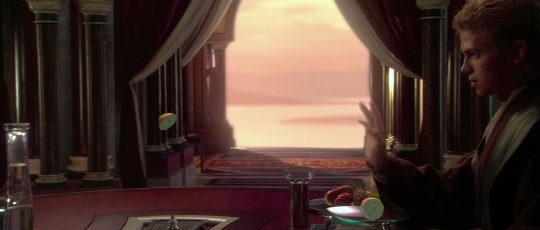

That's because this miracle wasn't performed to benefit others, it didn't arouse trust or confidence in the Buddhist path and in one's own potential for enlightenment. It was done to impress and to show off, thus, it was distasteful. In Star Wars, this can be compared to Anakin Skywalker using the Force in Episode II to fly a fruit through air in order to impress Padmé - he even admits, "If Master Obi-Wan caught me doing this, he'd be very grumpy."
Bodhisattvas
Bodhisattva can mean anyone who vows to become enlightened in order to relieve the suffering of all beings, but there are also celestial Bodhisattvas, who are realized beings, inspired by the wish to attain complete enlightenment, and have vowed to be reborn in the world to help all living beings. They're deity-like beings, however, it should be noted that these Bodhisattvas are representing our potentials.

Guanyin - or Avalokitesvara or Chenrezig - is enlightened compassion, Vajrapani is the powerful energy of enlightenment that can be utilized to do many good things, Manjushri is the enlightened wisdom. I think the most important ability that these Bodhisattvas are said to possess, is that they're able manifest themselves in hundreds or even thousands of bodies simultaneously.
In this essay of mine, I examined Jedi teachings and how the Force works - these are, on the fundamental level, identical to Buddhist philosophy. I hope it will help:
Māra and the Dark Side of the Force
In Buddhism, although Māra is depicted as a god or demon, he is an aspect of the mind and the heart: the inner experience of all forms of attachment, greed, hatred, and delusion, everything that interferes with and puts to an end our spiritual practice. His "armies" are sensual desire, discontent, hunger and thirst, craving, laziness, fear, indecisive wavering (doubt), restlessness, longing for the transitory things in life (gain, praise, honor, and fame), and praising oneself and belittling others. His three "daughters" are thirst, delight and desire.

When Māra is discussed as an external being, he is said to reside in the highest heavenly realms of cyclic existence, thus, he enjoys long life, power, privileges and pleasures. But it must be noted that he is, like any other being, subjected to Karma, birth and death, and there are stories that gave a closure to him as an external entity: he ends up being a Buddhist himself. So, if you wish to draw an analogy with Māra in a complex and intriguing story you draw up, I suggest to use the Son as his Star Wars counterpart. He embodies the dark side of the Force, but he is also the mosaic of the light side and the dark side just like all living beings in George Lucas' Star Wars universe.

The story of Devadatta as a potential inspiration
If you would like to use Buddhist stories as inspiration for the Sith, I recommend you the story of Devadatta, the Buddha's enemy. In the Theravada tradition, Devadatta, who was one of the disciples of the Buddha, attained several miraculous powers through mental training, but no wisdom and compassion. His miracles convinced a crown prince, Ajatasattu, that he is a great teacher. But Devadatta became obsessed with his own skills and sought fame and power, declaring, he should be the one who leads the Order of Buddhists and not the Buddha. Even though his miraculous powers began to fade as his mind became clouded by such afflictions, he started to preach his own teachings, claiming, they're from the Buddha himself.
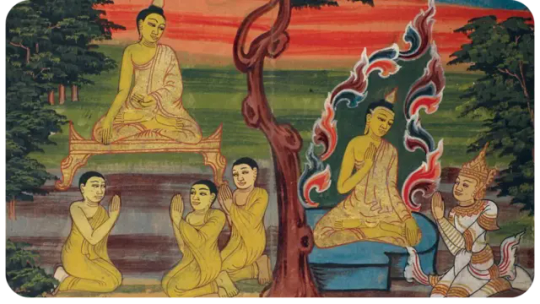
The Buddha warned him that he is on the path of self-destruction but Devadatta was relentless. Long story short, he was so consumed by greed that he eventually convinced prince Ajatasattu to kill his father, the king, and usurp the throne, while he assassinates the Buddha. As an attempt, he unleashed a raging elephant, but it was calmed by the loving-kindness of the Buddha, and his other attempts failed as well. Although Ajatasattu took the throne, the public was so resented of Devadatta that he was forced to withdraw his support. After this, he tried to cause a schism in the Order, but his followers were won over by the Buddha. Devadatta eventually died of sickness, his bad mental state supposedly ate into his physical health, however, in his final moments, he realized his mistakes.
The story of Devadatta, in my opinion, is an ideal inspiration for the first Sith, if we go with the notion that the Sith were Force-sensitives who left the Jedi Order. This is in Disney canon, I think. If we go with the fact that according to George Lucas, the Sith ruled the known universe before they destroyed themselves, we have a more complex situation, because that would imply that the first Jedi started out as a Sith apprentice or a Sith Lord, like Gautama Buddha started out as a prince living in luxury, and not a great spiritual teacher, or that the Sith were able to gain control over the galaxy, like Darth Sidious did, with the difference that there wasn't an Emperor, but many warring Sith Lords who all sought to rule the whole galaxy.
44 notes
·
View notes
Text
“Speak only endearing speech, speech that is welcomed. Speech, when it brings no evil to others, is a pleasant thing.”
— Gautama Buddha, Sutta Nipata
26 notes
·
View notes
Quote
Happiness never decreases by being shared.
Gautama Buddha
#Gautama Buddha#motivation#quotes#poetry#literature#relationship quotes#writing#original#words#love#relationship#thoughts#lit#prose#spilled ink#inspiring quotes#life quotes#quoteoftheday#love quotes#poem#aesthetic
87 notes
·
View notes
Text



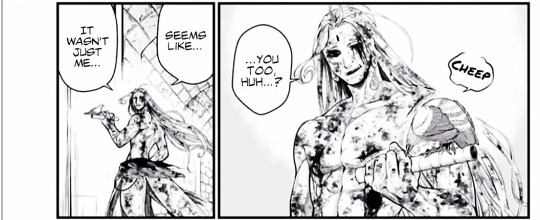

I just love the fact that this bird comes back after so long just to say goodbye to Zerofuku 🤧
#click for better quality#shuumatsu no valkyrie#gautama buddha#snv buddha#zerofuku#record of ragnarok
132 notes
·
View notes
